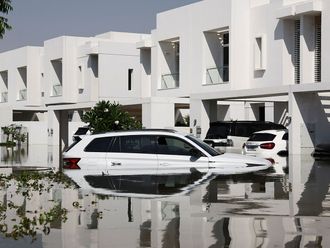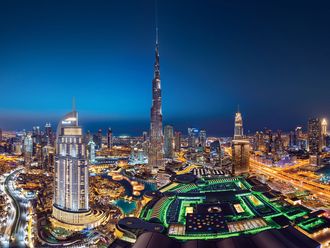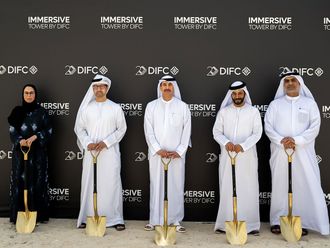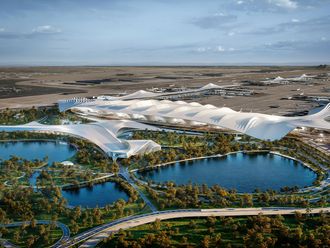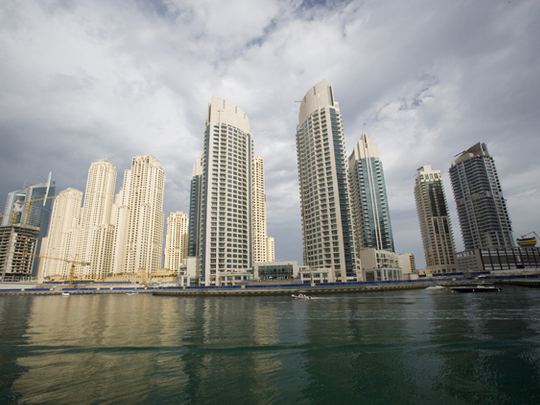
In a market where anything related to real estate is being viewed with suspicion, chances that private property funds and real estate investment trusts (REITs) will make inroads into the UAE appear to have become slimmer than ever before.
The concern is that impaired investor confidence and no track record in such investment vehicles will impede efforts. "The UAE's property market is roughly seven years old and over the last 18 months has been stuck in a down cycle. This is a young market that is yet to mature to offer broader investment platforms like REITs," says Saud Masud, head of research and senior real estate analyst, Mena region, UBS.
Typically, the shift from asset creation to asset management helps developers maximise a property's value, opening the doors to liquidity in the form of institutional investors. Avoiding the hassles of direct investment in real estate, funds could have leveraged the current lower property prices in Dubai to generate steady yields and a sustainable income. Despite this win-win situation, the UAE has remained a nascent market for such collective investment vehicles for a number of reasons.
A REITs law has existed in Dubai since 2006 and despite the UAE market having plentiful opportunities for REITs to take root, overseas institutional investors are unlikely to commit capital, awaiting a more transparent market.
"In the region, there's been a push for the formalisation of the REITs industry to increase transparency in order to restore investor confidence and make it professional," says Mauricio Zuazua, a real estate expert at A.T. Kearney, a global management consultancy.
However, overseas investors are looking for locally bred and managed funds to demonstrate that the industry is moving towards transparency, says Zuazua. Concerns over further price declines in the foreseeable future may also deter investors, says Masud.
While it appears a colossal task to convince developers and companies to formulate REITs, possibilities cannot be brushed aside. "If you start with an instrument or fund that makes available to investors high quality properties that are producing cash flows, then the risk is significantly lower. If you group several such good properties into an income-producing fund, your risk and returns will be lower," Zuazua says. In the same vein, Masud adds, "Market stability and visibility is key to promoting such offerings. Plus, right now, risk appetite also appears low."
One way is to start with private property funds that will attract more regional FDI (foreign direct investment). Such funds will act as catalysts in the transition of a fledgling property market into a mature one. "Once private funds get successful, we can demonstrate to institutional investors from further away that this model works and then you can start listing funds," says Zuazua.
Investors are unlikely to commit capital to a fund where the underlying asset lacks sustainable tenant management practices. "It should be a high quality asset that can be used by a variety of tenants and one that is competitive globally," says Zuazua.
The question also remains whether developers would be willing to sell a diversified, income-generating asset base to investment trusts looking to mitigate their risk. In times of duress, it has emerged that developers are aiming to streamline their income-generating assets into a source of recurring revenue.
With REITs offering an alternative to the risky proposition of direct investment, investors will be keen to buy into a fund with a diversified asset base.
"For an investor from the Europe or the US looking to invest in property in the Middle East, it is less risky to investin a diversified fund than in one property," says Zuazua.
However, here's a word of caution: REITs no longer offer astronomical yields like those witnessed during the property boom. Returns in the range of 6 to 8 per cent are more plausible now.
"In Asia, you have some funds yielding as little as 2 per cent and some as high as 14 per cent. However, the yield is lower than what we were accustomed to getting in 2008 and before on a real estate development fund," says Zuazua.
Masud thinks otherwise. "I believe rents and property prices will remain challenged for the coming two years; hence REITs should be offered at higher rates, perhaps high single digits, to offset the market risk."
Meanwhile, Charles Neil, CEO of Landmark Properties, says there are funds investing in property in Dubai and Abu Dhabi, but they demand a risk premium that is higher than say Europe or the US to reflect the risks of investing here. "There are not a lot of opportunities here. Typically a fund would look to buy distressed properties in the hopeof making large capital gains, but thereis not a lot of distressed property around, and for those investing in income-producing assets, there are very few assets that have long-term income flows as the concept of long-term leases is not very common in the UAE. Most leasesare only for one year and do not offer much security."
Developers can also look to tap ancillary revenue streams by creating REITs. There is opportunity for revenue earnings via property management,co-branding programmes on retail and smart utilities, where savings from utilities can be shared. With the region undergoing a development slowdown, well-capitalised developers are also looking to expand in new geographic markets. However, this requires links with local contractors, an extensive land bank and connections with the government to push permitting through.
"We have seen developers starting to incorporate such sources to make up for the lost revenue from development. As the market becomes more mature, other sources of revenue will become more preponderant than development revenue," Zuzua says, citing how developers like CapitaLand, Tishman Speyer and Hines gradually expanded first in the region.
Earlier, developers' overseas expansion plans always translated into mega developments. With the contraction of the credit markets, inherently high-risk projects are likely to remain on the drawing board.
"Geographic expansion for the sake of geographic expansion is not the answer. You need to consolidate your operations, get in control of your costs and focus on delivering what you've got and then consider expansion," says Zuazua.
An analysis of asset classes in the region reveals that there has been little or no focus on low or middle income housing. Seizing the opportunity to bridge the gap, and encouraged by the decline in prices of construction materials, developers like Dar Al Arkan in Saudi Arabia are making ground in this much neglected sector. Also, there is little competition as the majority of projects focus on high-end buyers.
The undersupplied housing sector in Saudi Arabia, with its growing young population and imminent signing of the mortgage law, is a good opportunity, says Zuazua. "Saudi Arabia has the population fundamentals that warrant more development. Unlike the Qatar or Bahrain, for example, which must attract expatriates to feed real estate demand, development in Saudi Arabia is driven by the needs of the local population."
FDI boost
"The behaviour of FDI [foreign direct investment] in the Middle East has been tremendous. In the past ten years, it's grown at 60 per cent CAGR [compounded annual growth rate]. That contrasts with the rest of the world, where FDI significantly dipped in 2008 and 2009. The FDI to the Middle East has flattened, but not reduced. The creation of funds can be a source of boosting FDI."
Mauricio Zuazua, A.T. Kearney



